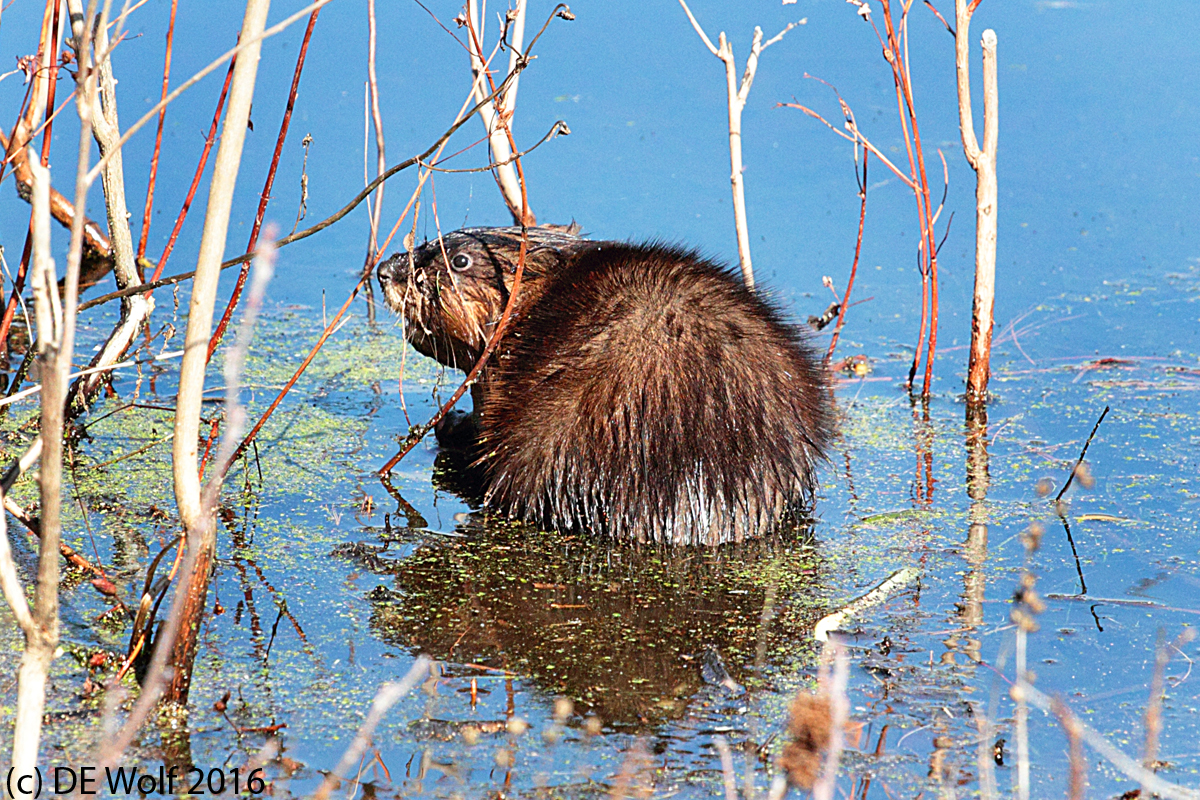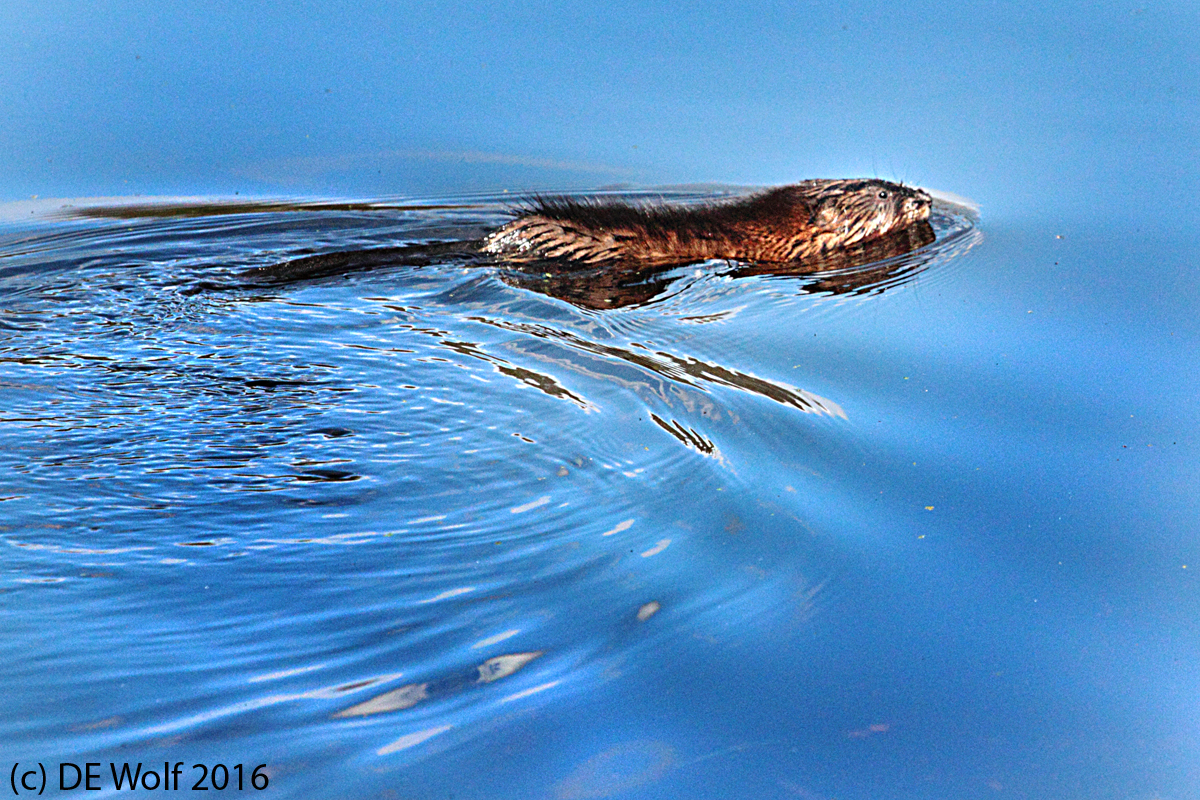If you visit the Assabet River Wildlife Refuge’s webpage, they inform you that if you want to see wildlife, go there near dawn or dusk. Well, the other morning I made it out early, but not that early, even though dawn is now driven forward by the hour of daylight savings time. It was obvious that the pond and the forest were coming alive. Everywhere Blanding Turtles had crawled out on logs and tufts of Earth, usually in large groups, to soak in the precious sunlight. As I was walking the trail, I saw a fuzzy mass sitting on a stump that emerged from the pond and started taking photographs as I approached. I thought at first that it was a little beaver, and he was terrified or at least very nervous about my presence, I came withing five meters of him and took the picture of Figure 1. Yes, it is a face that only a mother could love.
I was troubled by the twigs in front of him but could not get around them. So after I knew that I had the image that I wanted I took a few steps forward. This immediately drove him into the water and his long round tail revealed that he was not a beaver, after all, but rather a muskrat – Ondatra zibethicus. I managed then to capture a decent image of him as he swam off, and you can see from the interesting wake that he is headed left, like a rower with one paddle in the water. Success in animal and bird photography is almost always in the sharpness of the eye. At that point the muskrat dove only to reemerge among some reeds a distance off. Wildlife can be difficult to photograph because of its elusiveness. This only adds to its appeal. But it is not the elusiveness that intrigues us. Rather it is the reminder of a place that we ourselves came from, indeed that we have never truly escaped.
Figure 1 – Canon T2i with EF70-200mm f/4L USM lens at 180 mm, ISO 1600, Aperture Priority AE Mode, 1/2000th sec at f/7.1 with no exposure compensation.
Figure 2 – Canon T2i with EF70-200mm f/4L USM lens at 200 mm, ISO 1600, Aperture Priority AE Mode, 1/4000th sec at f/7.1 with no exposure compensation.


